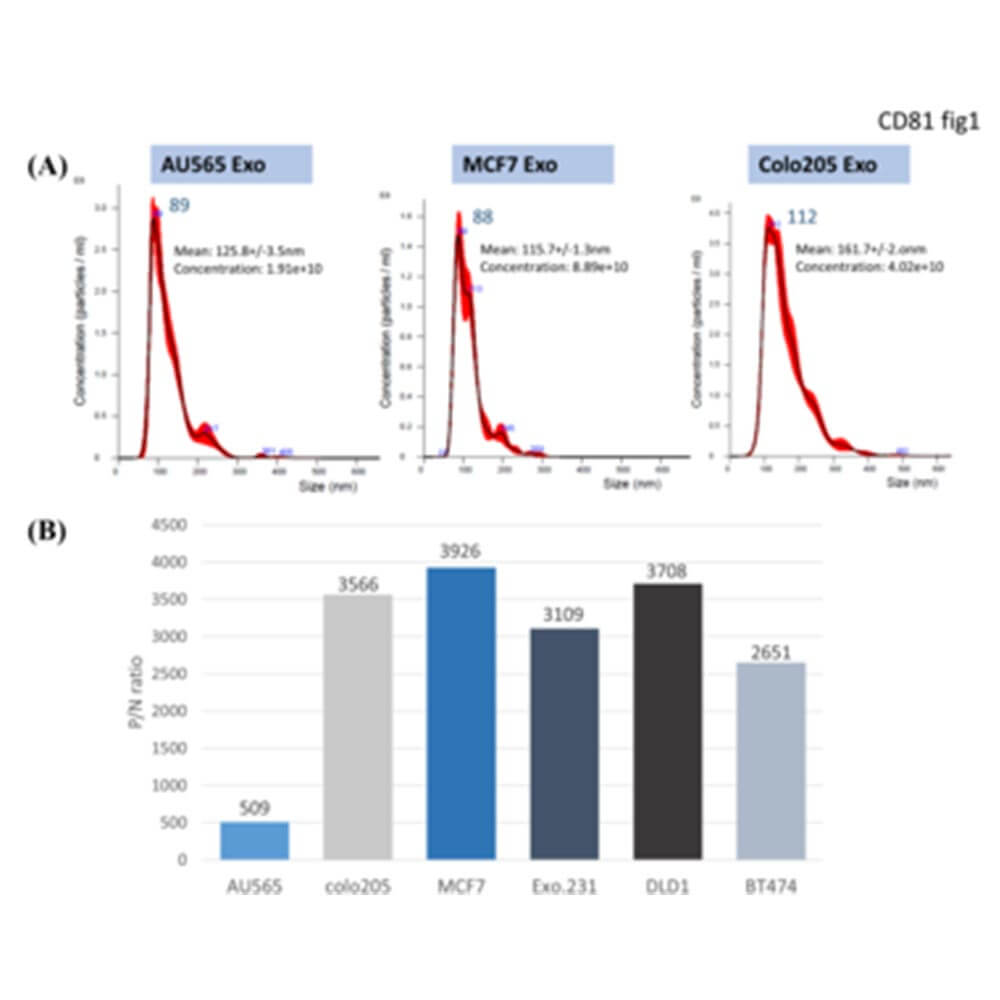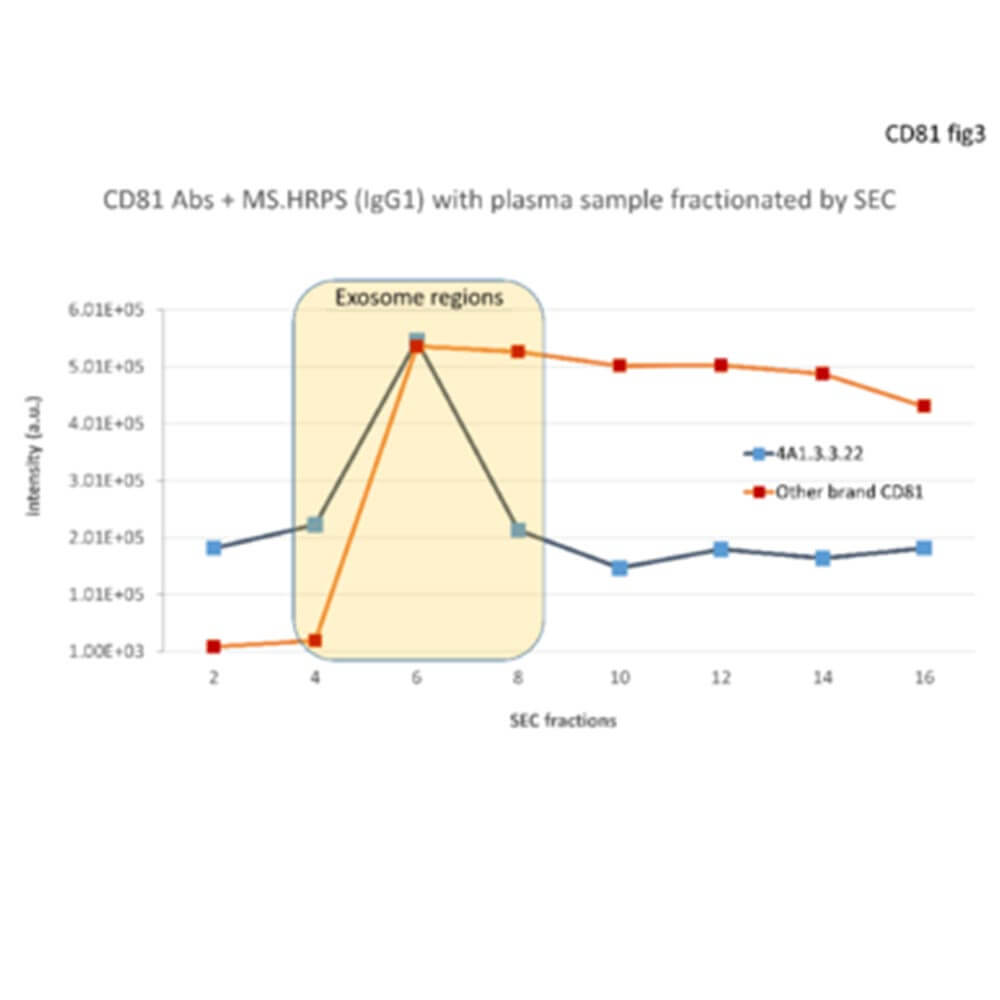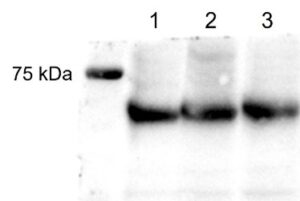Summary
| size | 20 to 100 μl |
| Clone | PSL263 |
| form | Liquid |
| Species reactivity | human |
| Isotype | Rabbit monoclonal / IgG |
| Concentration | 1mg/ml |
| Applications | WB, ELISA |
| Storage | -20°C, avoid freeze / thaw cycles |
| Storage buffer | PBS, pH 7.4 |
| Expected molecular weight | 65-78kD |
Product Data
Phospho-Tau217 Antibody in WB
Lane 1: human 1 extracellular vesicle (EV) after ultracentrifugation (100,000 xg)
Lane 2: human 2 extracellular vesicle (EV) after ultracentrifugation (100,000 xg)
Lane 3: human 3 extracellular vesicle (EV) after ultracentrifugation (100,000 xg)
Antibody condition:
1st Ab: anti-phosphorylated tau217 (clone PSL263) at 1/2,000 dilution
2nd Ab: goat anti-rabbit IgG (HRP) at 1/10,000 dilution
Exposure time: 1 second
Diluting buffer: 1% BSA/PBST
Phospho-Tau217 Antibody in ELISA
Antigen coating concentration: 5 μg/ml, 100 μl/well in PBS, pH 7.4, 4°C overnight.
Blocking buffer: 3% skim milk at 37°C for 1 hour.
Antibody condition:
1st Ab: serially diluted anti-phosphorylated tau 217 (clone PSL263) at 37°C for 1 hour
2nd Ab: anti-Rabbit IgG Fc secondary antibody (HRP conjugate) at 1/5,000 dilution in PBST at 37°C for 1 hour
Target Information
Tau protein can be found in neurons, associated with microtubules and predominantly located on axons. Excessive phosphorylation of tau (p-tau) increases the likelihood of intracellular insoluble structures formation, such as neurofibrillary tangles. is increased in Alzheimer's disease (AD), and correlates with clinical progression.1 P-tau217 discriminates AD from other neurodegenerative diseases, with higher accuracy than established MRI-based biomarkers.1 Plasma P-tau217 levels have been shown to increase during the early preclinical stages of AD when insoluble tau aggregates are not yet detectable by tau-PET.2 Importantly, the level of p-tau217 in plasma may hold promise as a biomarker for early AD brain pathology.2
Support and Contact
For additional information or assistance, please email: andrewwo@reliance-bio.com
References:
- Palmqvist, S. et. al. JAMA, Vol. 324, Issue 8, Pages 772-781, 2020.
- Janelidze, S. et. al. JAMA Neurol, Vol. 78, Issue 2, Pages 149-156, 2021.
Limited Use Label License: Research Use Only & Non-Commercial
By purchasing and/or use of this product, one agrees to the following terms:
- Limited, non-transferable right to use the product solely for internal research purposes. No right to resell the product or any of its contents, either explicitly, implicitly, or through estoppel.
- This product, whether partial or as a whole, cannot be used for commercial applications of any kind, including but not limited to quality control and commercial services that involve reporting the results of one's activities for compensation.
- Reliance Bio has intellectual property rights related to this product. For information concerning licenses or additional rights for commercial use, please email Reliance Bio. We will be glad to discuss with you.
- This product is not intended for therapeutic or diagnostic use.
Disclaimer
Reliance Bio will not be responsible for any damages that may arise from its use. This includes, but is not limited to, damages from the product's accuracy, suitability, injury, or any other cause of action. Reliance Bio will not be held liable for any special, incidental, indirect, punitive, multiple, or consequential damages arising from the use of this product. Reliance Bio shall not be held liable for any patent injury or other violations that may result from the use of this product.




